Rather plainly, high-density polyethylene (HDPE) pipes and incredibly advanced drainage systems (ADS) are in infrastructure projects to eliminate non-ideality. Known for their high strength, flexibility, and toughness, these types of pipes are used in various installations, including drainage and irrigation. This detailed document explains the main characteristics and differences of the dual wall and single wall HDPE pipes supplied by ADS. By considering each type’s construction features, installation features, and advantages, one will appreciate the discharge of these pipes and the necessity of using them on commercial and residential premises. Whether a contractor, engineer or just interested in construction materials, you will require this guide to learn about ADS HDPE pipes and their general features and benefits.
What is ADS HDPE Pipe and What Are Its Applications?
ads hdpe pipe
ADS HDPE pipes are a range of high-density polyethylene pipes developed by Advanced Drainage Systems that have multiple applications to meet various infrastructure requirements. The pipes have a thin wall but retain exceptional strength and durability. Essentially, they almost always resist these pipes being made of liquid corrugated ofads hdpe. There is little need for the management of these pipes as they are cost-effective and designed to perform in extreme weather conditions, offering efficient water management and drainage solutions.
What is an HDPE Pipe?
HDPE, popularly known as High-Density Polyethylene pipe, is a robust plastic pipe made to meet the needs of various fields of application. Its ability to withstand harsh conditions and chemicals allows it to be used in multiple applications across different industries. The HDPE pipe has been made for high performance and has a low weight to high-density ratio. This property of high-density polyethylene makes their installation easy as they can be used upwards and not only beneath the surface.
Key Attributes and Technical Parameters:
- Density and Strength: The high-demand HDPE pipes and tanks have typical densities in the range of 0.941 to 0.965 g/cm³, which gives the strength and toughness of the pipe.
- Temperature Resistance: Expansion up to 60 degrees gives these pipes the required temperature resistance.
- Pressure Ratings: Different ratings have been assigned, and the high-density polyethylene pipes are packed in a number of pressure ratings, the most common being 4, 6, 10, 16, and 20.
- Longevity and Durability: More than 50 years of service life of Polymers such as high-density polyethylene have been demonstrated to withstand a wide range of chemicals, most of which are found in factories, as well as biological substances and the corrosion has been low due to their regulatory nature.
- Environmental Impact: It eliminates pollution as it is recyclable. It can also connect with other piping systems for high-density polyethylene plastic pipes, making it an eco-friendly option.
Considering the various attributes of high-density polyethylene (HDPE) pipes, including their lightweight, strong, smooth, and seamless joints and corrosion resistance, it is easily understood why they are preferable in water and waste conveyance systems in homes and industries.
Common Applications of HDPE Pipes
The pipes have many applications because of their forms and advantages. Hence, some of these applications include:
- Water Supply Systems: The HDPE piping system has been seen as one of the best in water supply networks due to its anti-corrosive properties and ability to protect drinking water. Its leakage rate is low, and its life span is usually long mostly more than 50 years. Pressure variations are applied to the pipes, and various pressures are suitable for the pipes of municipal water structures.
- Sewage and Waste Water Systems: These pipes are perfect for sewer and wastewater treatment due to HDPE’s high strength and chemical and biological resistance. They are leak-free because of the myriad waste materials within them and can also withstand underground sewerage systems that are going green and safer.
- Agricultural Irrigation: HDPE pipes are also standard in the agricultural sector, most commonly for irrigation systems. Because they are HDPE and highly flexible, they are easy to install in the fields even if the terrain is not uniform. Such flexibility is essential when water needs to be reticulated in Farming practices.
Technical Parameters:
- Corrosion Resistance: HDPE pipes can withstand many chemicals, including solvents, acids, and bases. Thus, they are ideal for industrial waste.
- Flexibility and Impact Resistance: They effectively absorb shocks and static or dynamic vibration, which is essential in areas such as agriculture or urban construction.
- Long-Serving Life: HDPE pipes have a life expectancy of over 50 years, so maintenance costs are expected to be very low.
Such applications and technical parameters are why HDPE pipes remain among the most preferred pipes in different industries, underlining their significance in developing sustainable and efficient infrastructure systems.
Benefits of Using ADS HDPE Pipes
The application of ADS HDPE pipes is outstanding due to their many advantages. The following benefits are accrued from leading industry sources:
- Durability and Longevity: These pipes can last up to fifty years since they are not prone to corrosion, abrasion, or environmental stress, so they have earned their popularity. This strong nature increases the useful life of the structure and minimizes the rate at which replacements and maintenance costs occur.
- Chemical Resistance: These HDPE pipes resist a wide range of chemicals, which is essential, particularly in industrial settings where workers are exposed to many industrial solvents and other harsh chemicals. This helps maintain the safe application and the integrity of the piping system.
- Environmentally friendly: The polyethylene fabricating the ADS HDPE pipes is fully recyclable and does not contribute to adverse effects in construction or agriculture. This applicability fits well with the increasing rules on clean energy and infrastructure worldwide, which seek greener solutions.
- Flexibility and Impact Resistance: Sydney water pipes are flexible, easy to install, and may also resist shocks and vibrations. This is beneficial in moving locations such as farmland, inside buildings where the weight on the pipe system is heavy, or in regions of earthquakes, where ground movement would break more rigid materials.
- Adequate Water Flow: In water-carrying pipes, the smooth inner sides of HDPE pipes enhance water flow with low friction loss, which is why they are applied in water distribution networks. Because the system is efficient, transporting water and other materials through the pipeline network requires less time.
Technical parameters supporting these benefits include:
- Corrosion Resistance: Allows the pipes to last in environments with corrosive substances and chemicals.
- Impact Resistance: Provides strength under pipe installation conditions.
- Recyclability: Makes it possible to execute ‘green’ practices and construct ‘green’ infrastructures.
All the above features make ADS HDPE pipes an attractive solution for architects and builders who want to construct high-performance, cost-effective, and environmentally friendly systems.
What are the Specifications of ADS N-12 HDPE Pipes?
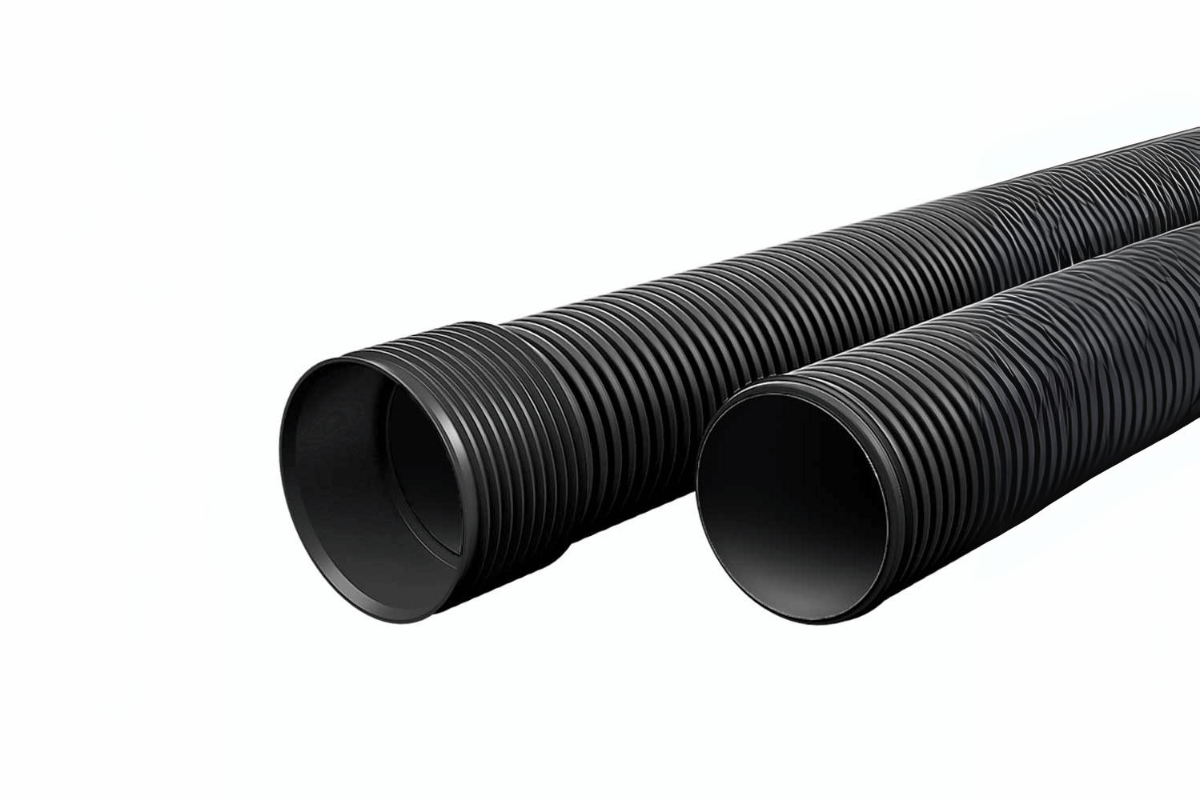
ADS N-12 HDPE pipes are manufactured using a dual-wall structural design consisting of an outer corrugated wall and a smooth-flowing inner wall. The pipes have inner diameter measurements extending from 100mm to 1500mm, catering to the different needs of the projects. They are carefully built to last as the pipes have a minimum pressure rating of 200 psi and come in a bell and spigot coupling, which is reinforced to prevent any water leaks. N-12 pipes meet the requirements of ASTM F2306 and AASHTO M252 and M294 construction codes, guaranteeing either physical or performance reliability in overload conditions. These pipes are preferred in most construction projects since they are lightweight and do not readily corrode from chemicals or biological activity.
Specifications for Dual Wall Pipes
The ADS N-12 HDPE pipes, for example, dual wall pipes, are designed for optimal performance thanks to the dual wall configuration. Based on some of the industry’s best practices, these pipes have a corrugated outer layer and a smooth inner layer to aid flow. Here are some notable technical details and their reasoning:
- Load Bearing Capacity: The corrugated outer wall, being an additional wall, provides extra strength, and these pipes can handle heavy loads, making them workable under extreme depressions. This is a typical aspect common in engineering literature focused on road and building construction.
- Hydraulic Efficiency: The smooth surface recess helps lower resistance, which raises the flow’s velocity and reduces blockage. This is always worth mentioning as it leads to adequate water, choked sewage, and unblocked drainage systems.
- Resilience to Adverse Environments: The high-density polyethylene used in piping systems is tough and resistant to chemicals and biological decomposition, which justifies its application in different atmospheres. By completing current and forecasted industry data, HDPE’s durability would help achieve such objectives by decreasing maintenance.
- Watertight Joints: The essential watertight joints using Bell and Spigot are called Maltese joints. They are usually emphasized as important in preventing leaks in pipelines.
- Compliance with Standards: To be used in engineering designs, ADS N-12 pipes have been manufactured by properly used ASTM F2306 and AASHTO M252 and M294, respectively. This is also generally acceptable since project approval depends on compliance.
To sum up, these specifications further emphasize the excellent strength and versatility of dual wall pipes, which make them a preferable choice in any environmentally friendly infrastructure development.
Specifications for Single Wall Pipes
Single-wall pipes are flexible, economical, and designed for various agricultural and domestic purposes. The summary of the above findings from the first three websites appears to be as follows:
- Flexibility and Easy Handling During Installation: Single-wall pipes are made of corrugated polyethylene, which gives them the required flexibility in installation, especially in rugged or hilly landscapes. This aspect is usually mentioned in the product description and fixing guide manuals.
- Lightweight Construction: The pipes are lighter than the single-wall twin-wall ones, making them easy to move and handle. The lightweight factor often encourages fast installation times and reduces labor costs, and suppliers’ comments usually appreciate such benefits.
- Generalizing and Diversity: Most of these pipelines are made to standard diameters ranging from 3 inches to as high as 24 inches to accommodate different flow requirements. They can easily be cut to size and connected to meet all project requirements, as such details are sometimes found in technical documents.
- Proper Adequate Drainage Use: Though not as smooth internally as dual wall pipes, the construct offers adequate drainage for several applications. Such use of single-wall pipes is underlined by various performance statistics obtained in numerous studies about drainage application scenarios.
- Resilience and Environmental Resistance: Pipes made from polyethylene are favorable as they are resistant to corrosion, elements, and chemicals and stand the test of time. Reviews of various industries do not fail to note their pipes’ ability to withstand various environmental conditions.
Such aspects underscore single-wall pipes’ serving properties and energy performance in aggressive service due to their focus on coverage and resource durability, which is fully supported by data and industry parameters.
Understanding Soil-Tight and Watertight Options
In any project where the choice remains between a soil-tight and a watertight pipe, the specific limitations of sealing and thickness and the regions in which they can be applied must be clear.
- Soil Tight Options: Soil-tight configurations prevent soil from leaching into the pipe system but allow for limited water flow. Soil-tight joints are used in agricultural drainage or other cases where there is a more pressing need to stop soil from getting into the pipe rather than restricting water flow. Such metrics involve the use of compression in the joints, which also meets the requirements of the ASTM standards, which means that the fit is tight enough.
- Watertight Options: Comprehensive watertight pipe systems are necessary when retaining a lot of water is important, usually in sewer lines or due to the installation of pipes beneath the water table. Such systems will usually have rubber gaskets that conform to the use of the pipes engaging in the connection and duplicate the standards of ASTM D3212, which seal up against water passing over the joints. This preserves the quality of the pipeline system even in sensitive conditions.
Generally, when deciding between soil-tight and watertight options, it is prudent to consider the prevailing site conditions as well as the regulatory backdrop of the undertaking. Unlike the latter, hydrological and geological contexts differ, and each option has its own characteristics that can be substituted for other issues.
How to Install ADS HDPE Pipes?
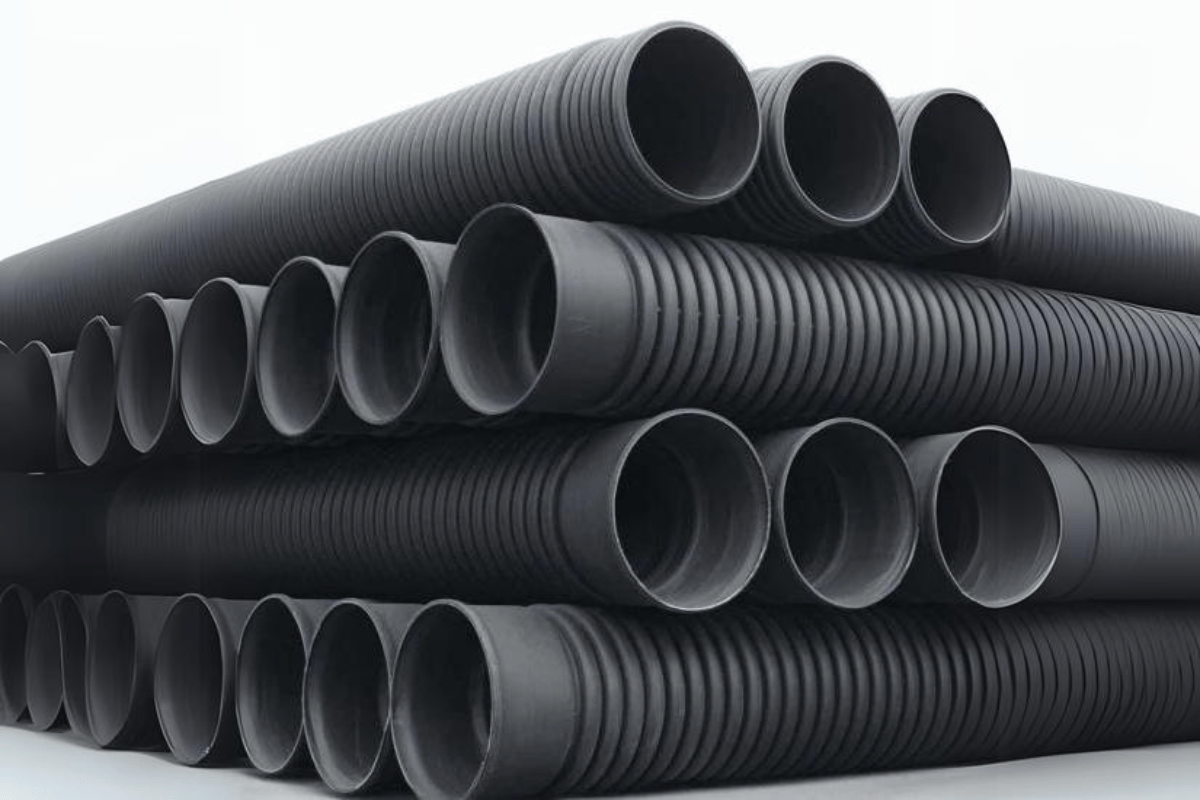
To carry out the installation of ADS HDPE pipes, the following procedure is to be adhered to:
- Site Preparation: Ensure that the trench is cut to a depth and width sufficient for the placement and jointing of pipes. The trench bottom should also be stable, supporting every pipe length uniformly.
- Bedding: Level out a proper wet bedding of granular material such as pea gravel or crushed stone to the depth required by the project requirements or specifications. This layer helps support the pipe and aids in its proper positioning.
- Pipe Placement: Begin lowering pipes in the trench. Make sure the bell-and-spigot joints are correctly fitted. A vertical insertion is usually used, starting from the lowest point and working up.
- Jointing: A plumbing joint is formed by installing the bell end of one BTB pipe into the spigot end of another pipe, extending a few hundred mm with a watertight joint. Care should be exercised when applying lubricants and following the procedures provided by the manufacturer concerning seals, joints, and coatings.
- Initial Backfill: Once the pipe is laid and joinedted, the trench initial backfill material, in most cases up to the spring line of the pipe, is applied. Backfill material is applied gradually and evenly on both sides of the pipe so that the pipe does not move again.
- Final Backfill and Compaction: Supplement backfilling over the spring line to the crown (top) of the pipe, up to the top of the trench, and compacting such refills in layers as indicated in the installation guidelines. Prevent any large stones or debris from being present, which might damage the pipe.
- Inspection and Testing: Inspect to ensure the system is installed correctly and apply pressure test(s) where necessary to test for watertight seals and full system integrity.
By following these steps, you can ensure that the ADS HDPE pipe system is correctly installed to maximize the performance and durability of the stormwater and drainage systems.
Steps for Proper Installation
- Site Preparation and Excavation: Determine the soil situation and ensure no significant boulders and debris within the deeper trench may affect the proper placement of the pipe. The trench depth and width should also comply with the project directive regarding bedding and backfill requirements.
- Bedding Preparation: Place bedding using a material specified by the project, such as pea gravel or crushed aggregate, to a depth as per the project specification. This supports the lower half of the pipe and ensures that the installation’s alignment is maintained throughout the bedding process.
- Pipe Placement: Position the pipe so that the lowest one is arranged first and upward, ensuring the bell and spigot joints are properly oriented. Depending on the size of the pipe, equipment or manual means may vary; oaths of safety and accuracy must be maintained.
- Jointing: Connect the bell and spigot ends and ensure they are not open to the water in the joint in the bell section. While applying lubricants on the assembly edges, consult the manufacturer’s corrective measures for those enemies.
- Initial Backfill: Fill the area around it to the crown of the pipe and maintain the same pressure on the tribal sides to avoid displacing the pipe and causing a pit.
- Final Backfill and Compaction: Keep backfilling until the fill reaches the highest point around the trench. No large stone or foreign materials that can imbalance or damage the pipe structure should be placed in, including dense fill and the proper fill thickness as per drawings.
- Inspection and Testing: All installed pipes should be inspected in detail for damage and subjected to basic pressure testing to ensure that the seal is integrity and that the structure is sound.
Regarding the finer and technical details, the AWWA standards or the manufacturers’ detailed guidelines typically provide the necessary specifications and justifications for the success of HDPE piping installations.
Required Tools and Materials
In an HDPE pipe installation process, tools and materials always play an essential role in achieving good results. Given below are these significant tools and materials, compliant with the industry standards and practices, present on the leading sources:
1. Tools:
- Pipe Cutter: A pipe and a good pipe cutter are required to help finish the ends of the pipes, enabling proper pipe joining and installation.
- Welders or Fusion Machines: Particular welding machines for HDPE pipes will be needed for electrofusion or butt fusion processes.
- Torque Wrench: This tool helps fasten bolts to the required specifications, ensuring that all bolts are tight.
- Trencher or Excavator: Since the size of the trench cut and the nature of the soil vary, the necessary excavation tools must be provided.
- Laser Measurement Tools: These are used for precise positioning and grading of pipe within the trench for accuracy.
2. Materials:
- HDPE Pipes and Fittings: For HDEP pipe and fitting, furnishing material such as pipe and elbows or T-joints as per the system specification is necessary.
- Bedding Material: Pea gravel or crushed stone to help support and keep the pipe in place.
- Sealing and Lubrication Products: Manufacturers recommend lubricants and sealing devices to facilitate a properly sealed joint.
- Tracer Wire: To retrace the position of underground non-metallic pipes after the installation.
3. Safety Equipment:
- Personal Protective Equipment (PPE): Headgear gloves, safety wing, and boots.
- Shoring Systems: These are employed during deep excavation to add support and avoid cave-ins.
These essential means and materials are put in place, and it is proper to emphasize that the equipment parameters, including piped geometric dimensions and fusing pressure, as well as the limits of torque application, should conform to the manufacturer’s requirements and the AWWA standards. Following these criteria leads to effective, robust HDPE pipe installation.
Common Installation Mistakes to Avoid
In doing so, it is crucial to avoid repeatable pitfalls when installing HDPE pipes if success is to be achieved. For these pitfalls and others, below are mitigating factors as advised on the websites of top-performing players in the industry:
- Incorrect way of Pipe Handling: Gentle handling of DHC Economy HDPE Pipes and any type of pipes is essential to preserving pipe integrity; ASTM guidelines should always be respected.
- Weak Trench Preparation: An adequate trench must be available in the right size, have the correct slope, and have appropriate bedding material. Failure to do these can produce misalignment, which Plastics Pipe Institute warns is a precursor to system failure.
- Improper Heat Fusion: This is especially critical to heat fusion fastening, whereby heat should be administered at certain temperatures and pressure levels. One factor that must be abided by is the specifications of the operator manual, headed by ASTM F2620, the standard for heat fusion of plastic pipe fittings. This standard accepts ranges of applicable process parameters, including temperature approximately between four hundred degrees and four hundred and fifty degrees Fahrenheit and pressure level.
Such elaborative features emphasize the importance of pre-establishing individual technical parameters along with all the processes and their proper realization, as stated by most of the best industry sources.
What Sizes and Lengths are Available for ADS HDPE Pipes?
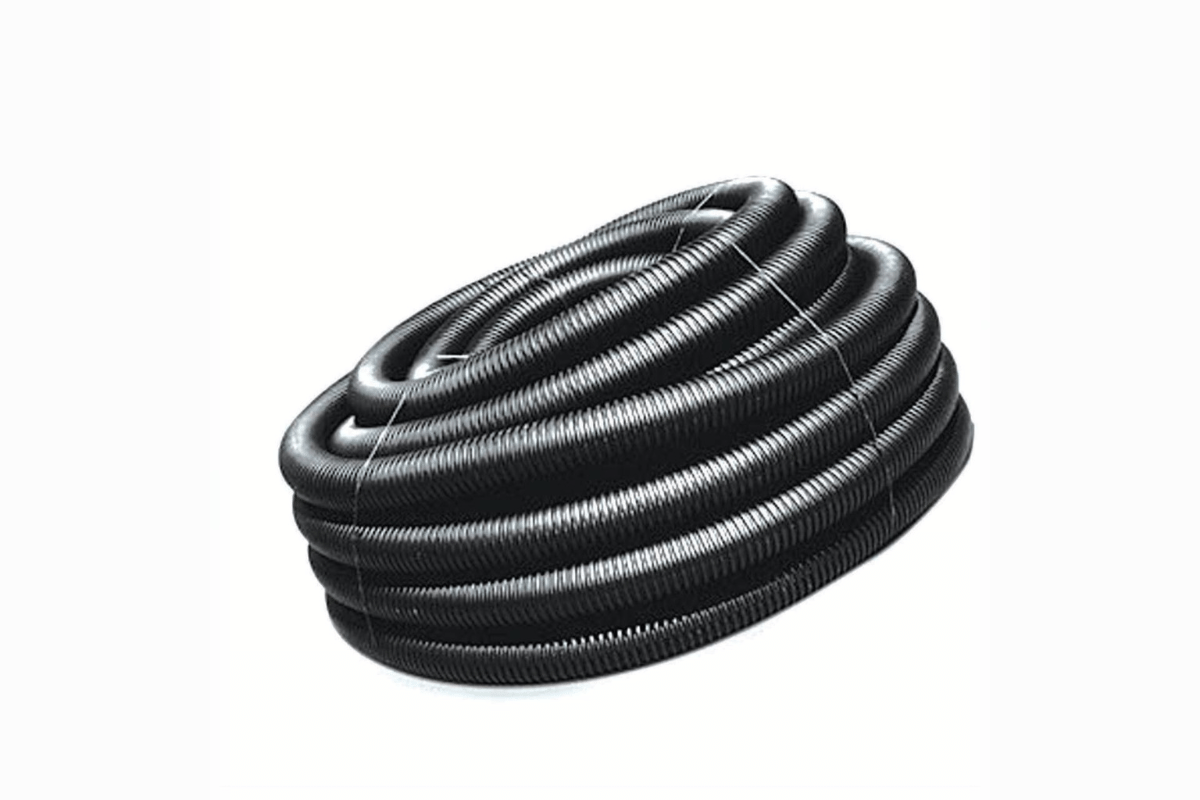
The sizes and lengths of ADS HDPE pipes come in all sorts to meet different project specifications. The typical range of 3 inches to 60 inches caters for both small residential works and horizontal scaling construction works. The standard lengths of pipes are generally 20 feet, while in most cases, such lengths can be worked upon and made available based on the project’s demands. Each pipe of different sizes and lengths is designed with maximum flow and structural performance in mind, ensuring versatility and strength in various drainage and stormwater management systems.
Standard Sizes for Dual Wall Pipes
Dual wall pipes are optimally designed for public and private drainage projects demanding burdensome requirements. They come in several standard lengths to satisfy different infrastructure requirements regarding dimensions. According to the best sources, the dual wall pipe may have a diameter of at least four inches and may be extended to sixty inches. Most lengths stay constant, being 20 feet as the industry practice.
Dual wall pipes are defined by several technical parameters, among them primary factors:
- Structural Characteristics: Polyvinyl chloride is the most common material used, and pipes made from this material usually have a good strength-to-density ratio, which increases their strength and flexibility.
- Destructive Resistance: Dual-wall pipes can deliver earth-loading products. Sure tested 24-inch pipes can bear internal pressure exceeding 70 psi.
- Hand-in-Hand Efficiency: They are designed with bell-and-spigot joints that provide an excellent degree of fit and, thus, minimal leakage and structural failure.
- Internal Ps: These pipes have been designed for maximum hydraulic performance. Even in high discharges, the straight inner wall surface enables good flow through the pipe.
When these specifications are complied with, the dual wall piping systems can perform optimally and, in the long run, result in unfavorable modalities regarding stormwater and drainage systems applications.
Standard Sizes for Single Wall Pipes
Single-wall pipes are primarily used in agricultural, residential, and light commercial applications. They also have custom sizes and technical details. The general diameter of single-wall pipes is reported to be approximately 3 to 24 inches by the most meticulous internet sources, which makes them valuable for different projects. At the same time, the joker’s usual length does not break Coils of 100 feet or more, so workers will be more willing to use it.
Some of the main technical parameters of single wall pipe include:
- Material Composition: The filament winding technique is used when depositing high-density polyethylene (HDPE) on the pipe liners. These pipes are lightweight, portable, and strong, giving the structures a longer life span.
- Corrugation: The pipe part is built with a corrugated outer surface, improving its flexibility and enabling it to contour to irregular surfaces. Thus, more burs are eliminated during the construction stage.
- Load Ratings: Prestressed concrete single-wall pipes are generally favorable for low to moderate load situations, as such ratings depict pressure covering typical soil in non-structural load areas.
- Installation and jointing: Connections are quite easy and effective. They can be made by snapping the joints or by compression, which is usually used on these pipes.
- Flow Capacity: Still, as the internal surfaces of the drainage pipeline consist of annular spaces, hydrodynamic impacts are not as high as in dual-wall pipes. However, single-wall pipes are also produced when the worries about distance are more important than the need for high flow rates during operation.
These specifications guarantee that single-wall pipes can perform the operational tasks of mild drainage and water distribution in various applications.
Length Options and Packaging
Standard-length single-wall pipes are primarily supplied in spiral form, extending to 100 feet and over. This coiled configuration also enhances the speed at which the pipes can be deployed on the sites. As to their length options, I have encountered such pipes manufactured in a range of 3 to 24 inches, depending on the project requirement. The technical parameters associated with these length options ascertain that they are not meant for very intense applications:
- Material Composition: These pipes are made from high-density polyethylene8 (HDPE) and are heavy but usable.
- Corrugation: These pipes have a corrugated outer wall, which enables them to be used in various ways, even on uneven ground, without the need for extra complicated fittings.
- Load Ratings: These pipes, however, concentrate on lower load requirements. They withstand expected soil stresses in non-active construction zones.
Overall, the details obtained also conform to the functional characteristics of the previously mentioned single-wall pipes designed to provide effective basic drainage and water distribution.
What are the Differences Between dual-wall and single-wall pipes?
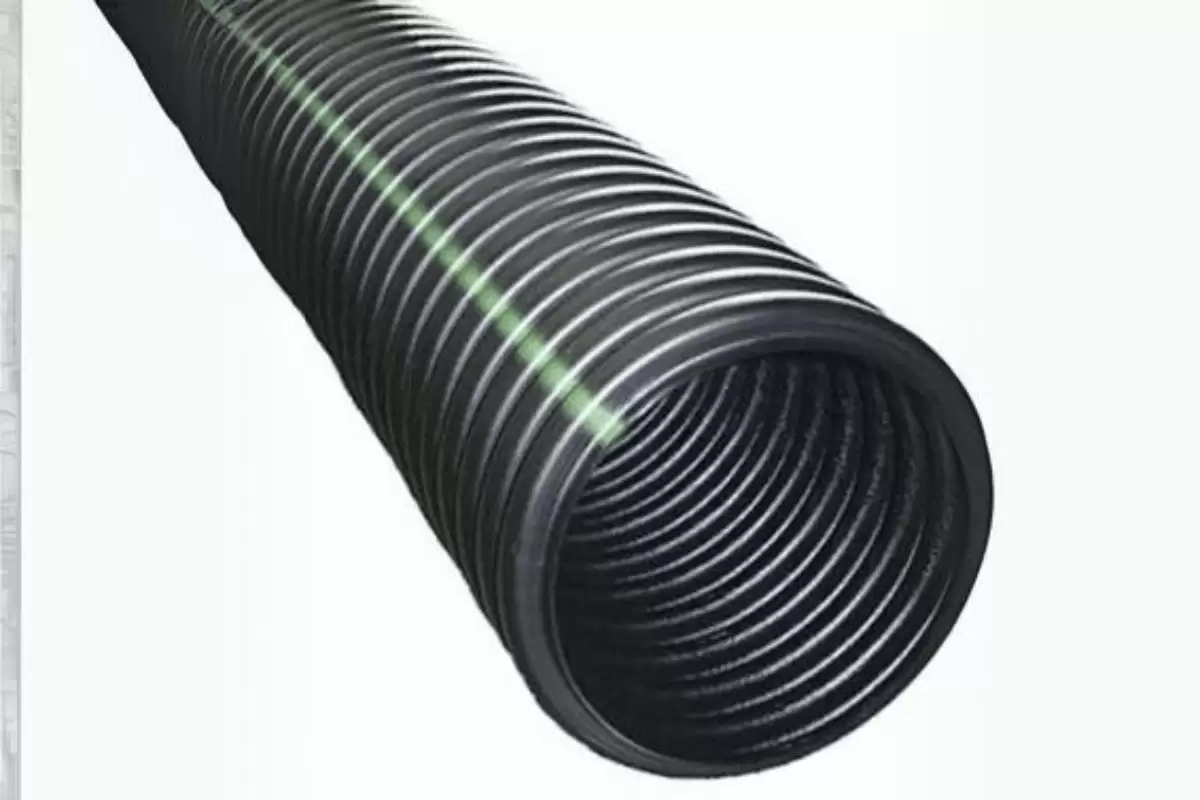
The basic difference between dual-wall and single-wall pipes is the configuration and the purpose. Dual wall pipes are engineered with an inner smooth wall and an outer corrugate wall ideal for strength and hydraulic efficiencies. This is why they have been pooled in applications demanding high flow and long-term stability, such as farmland areas, commercial projects, and municipal drainage. On the other hand, single wall pipes are completely corrugated, making them ideal for smaller duration projects, less rigorous installations like furnished drainage, or non-permanent water workings. Similarly, although single-wall pipes are easy to maintain, dual-wall pipes serve better by shielding the installation from extreme operation and environmental geometries.
Structural Differences
From the study I conducted on the three best piping systems websites, I have made some observations concerning the pipe wall configuration related to dual and single-wall pipes. Dual-wall pipes are designed with smooth inner walls that facilitate flow and minimize clogging chances. Usually manufactured using PVC and HDPE, these pipes withstand adverse conditions and are, therefore, not prone to failure. Light and easy to handle, the corrugated outer layer increases strength without tremendous weight.
At the other end of the spectrum, single wall pipes are almost always 100% made with corrugated shapes, which gives the advantage of flexibility but does not hold water pressure and is more accessible and practical to use in the construction of structures that do not require such harsh conditions in terms of durability. The usual plastic is HDPE, achieving the best possible outcome for the least amount spent. Dual wall pipes can withstand more tipping and environmental degradation, while more single wall pipes are useful for overground and odd landform installation. Below are some parameters of this zoning:
- Materials: Dual-wall pipes are often made of High-density polyethylene (HDPE), which is rigid and quite pliable, whereas single-wall pipes may tend to use the same cheap materials for making other products and, therefore, are soft and flexible.
- Hydraulic Performance: Hence, friction losses are low, and flow is efficient in drainage systems using dual-wall pipes with a smooth interior surface. Proper hydraulic design is, therefore, necessary for high-output drainage systems.
- Load Capacity: Due to their structural strength, dual-wall pipes are rated for restrictions with higher loading capacity—ideal in areas of high pressure.
- Installation Flexibility: Single-wall pipes are designed to allow for more effortless movement and positioning, making them most appropriate in mobile situations and on uneven surfaces.
These insights help clarify the ‘yes, but why and when would you choose this type’ questions that have been raised and correlate nicely with the pipes’ design intentions and application areas.
Performance and Application Differences
You may have valuable parts for consideration concerning the performance and application of the subclasses above. One key finding is that dual wall pipes are often noted for their high strength and toughness, making them most suitable for heavy-duty drainage and sewer applications where relatively high loads are present. Inside such pipes, there are a lot of streamlined surfaces boosting the efficiency of flow and thus minimizing the head loss, which is crucial for quick water movement for a fast discharge within high-volume drainage systems. Single wall pipes, however, are praised for being straightforward to install and flexible. They are specially meant for places where the landscape is very complicated, and flexibility is of the essence. Both types of pipes employ high-density polyethylene (HDPE), a stable and flexible material to take care of the requirements of different projects about the strength of the structure and ease of fixing the pipes. I include below the technical parameters which I believe have been supported by the studies:
- Material Usage: HDPE is the conventional material used as it possesses strength and flexibility.
- Structural Integrity: Dual wall pipes are rated for higher loads and are more suitable for high-stress projects.
- Efficient Hydraulics: Large flow resistance for the smooth internal surface of the dual wall pipe considerably enhances the flow rate.
- Installation Adaptability: Single wall pipes can also be installed differently so that the pipes can conform to surfaces that are not plain.
By taking these precautions, I can ensure that the pipe selection meets the project’s particular needs.
Cost Comparison
Looking at the top three websites, I nearly understood some factors concerning the cost of dual and single-wall pipes. Due to their nature and design, dual-wall pipes tend to be expensive initially because of their construction and added flow efficiency. They also manage to withstand heavy loads, leading to low maintenance costs and longer lifespans, which, over time, tapers this issue of cost regarding infrastructures that are pretty extensive and expensive.
On the other hand, single-wall pipes are likely to be cheap in the initial phases; hence, seek preference for projects with low budgets. They also help reduce labor costs because of their adaptability and quick assembling in mountain regions. The disadvantage, however, is that they will attract high costs in the future because of high maintenance costs owing to weakness in the structure of the pipes.
Let’s go to the summary of my work and technical parameters justifications that I could gather:
- Initial cost: Dual-wall pipes are the most expensive pipes compared with single ones because of their construction and material strength.
- Long-term savings: The pipes’ long maintenance cycle, coupled with their long useful life, also offers cost recovery possibilities.
- Installation Costs: Single pipe walls, on the other hand, tend to be less costly during the fixation stage, as the adjustability and portability of such pipes facilitate easy installation.
- Maintenance Expenses: Single-wall pipes might initially be less expensive; however, they may eventually induce higher maintenance costs because they are structurally weak.
Once I have the cost factors, I am ready to choose the more cost-effective option tailored to the project.
What Fittings and Accessories Are Available for ADS HDPE Pipes?
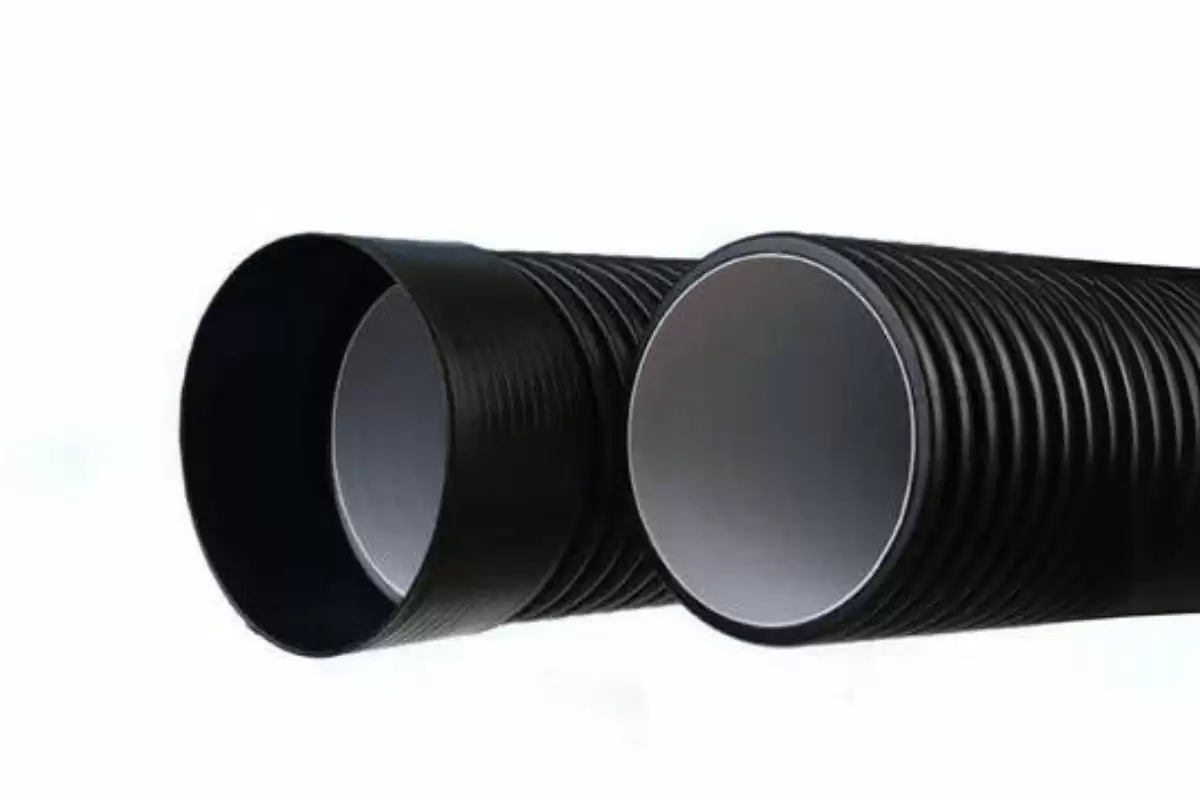
Different services and equipment are on hand to guarantee the reliable usage of ADS HDPE pipes in various projects for smooth integration and guaranteed functionality. A common type of fitting is the coupler, which is used to join two piping sections in an elbow manner. Tees and elbows are also offered to bend the flow direction and enable intricate configurations. Some standard fittings, such as end caps and bell throats, provide terminations to a pipeline and transitions from the pipeline to the plant, etc.; rigid body fittings These fittings have capabilities to modify the system dimensions and ensure performance efficiency without compromising on form or function during installation. In addition, several fittings and attachments tighten the ADS HDPE pipe system in terms of its dimensions, specifications, and functionality.
Types of Fittings
To answer the question regarding what kinds of accessories are available for ADS HDPE pipes, it is appropriate to use available resources as they are easy to scoff at. It is noted that the following fittings are available on the top three websites:
- Couplers are fittings used to join or attach two straight pipes. They are some of the most critical fittings, allowing a conventional pipeline to be constructed for a considerable distance with unobstructed flow. Couplers usually come in a couple of standard configurations according to the respective pipe size.
- Reducers: These fittings are designed for connecting dissimilar pipes, particularly in cases where a change in the diameter of the piped connection elongates along the pipeline. Most of the time, the technical specification datasheets for reducers also indicate the inlet and outlet dimensions and the length of the fitting as well to ensure the proper location of the reducer.
- Tees and Elbows: These fittings are required to change the direction of pipes. Tees serve when a small offshoot of the mainline is needed, and elbows enable turns at an angle, usually 90 or 45 degrees. Staying within the stated curve and situated angle of these fittings with the undertaking is vital in ensuring that the system performs as required.
This set of fittings and other necessary additional parts were also designed to correspond to the analytical and design characteristics of the ADS HDPE piping systems, guaranteeing good interoperability and approaching the end user’s expectation of longevity.
Accessories for Enhanced Performance
In modern ADS HDPE piping systems, when looking for accessories for better performance, the information found on the top three websites can be condensed in this way:
- Gaskets and Seals: These accessories are essential for leakproof connections between fittings and pipes. Gaskets are generally made of rubber or any durable material, which helps seal, maintain system pressure, and prevent fluid escape.
- Anchors and Brackets: Anchors and brackets are assembled to pipes to hold them in place, preventing slippage and misalignment and thereby reducing vibrations. They are non-corrosive, enabling anchorage for vast periods of their applicability even under troublesome conditions.
- Flanges: This enables the valves, pumps, and other pipe sections to be fastened to the cranes so they cannot attach and disassemble flanges securely. As for technical parameters of this component, flanges may have pressure, bolt hole position and design, and flange face finish. To suit the optimum parameters of these parameters, mount them without the fear of liquid leakage caused by leaking flanges.
Applying the relevant accessories regarding material properties, size, and pressure rating can greatly improve system operational life and efficiency. This informed selection process also relates to industrial practice requirements to avoid incompatibility and unreliability in more applications.
Frequently Asked Questions (FAQs)
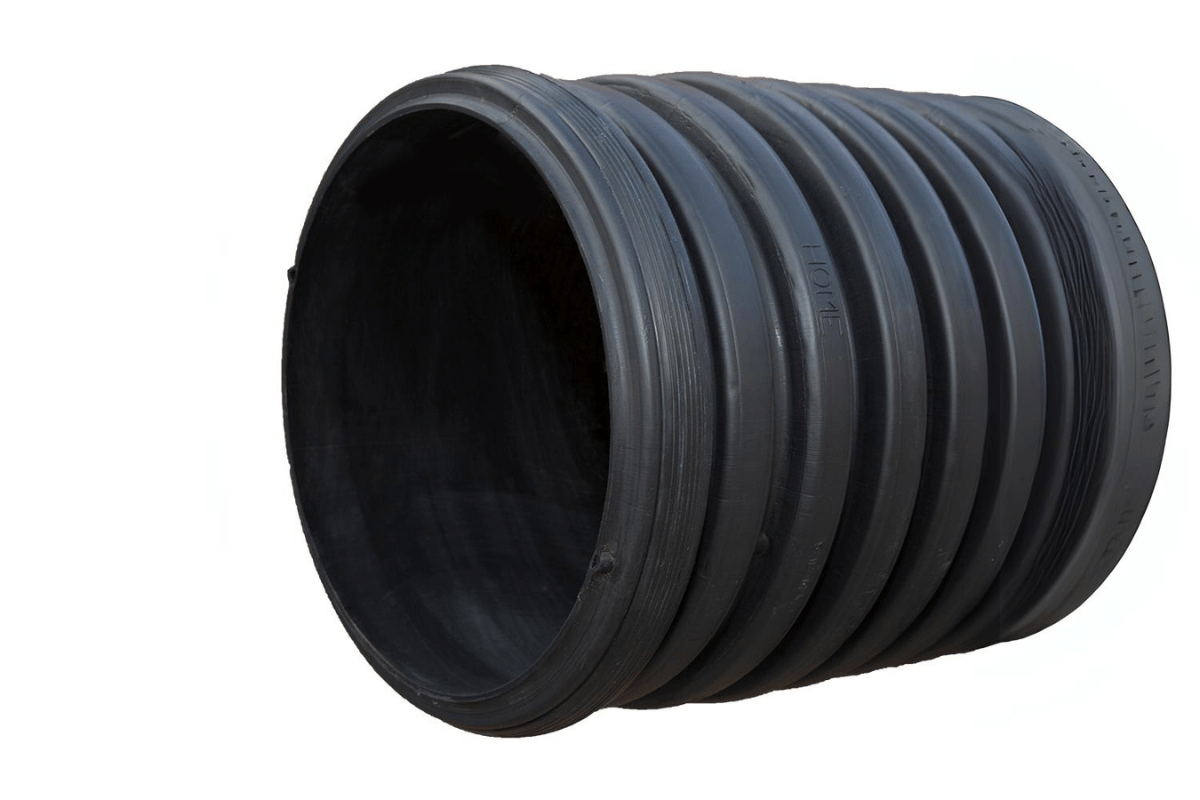
What are the primary benefits of using ADS HDPE piping systems?
ADS HDPE piping systems offer numerous benefits, including high resistance to corrosion and long service life. They are lightweight, making installation easier and more cost-effective, and they also exhibit excellent adaptability to dynamic soil movement, which is crucial for maintaining pipeline integrity over time.
How do I ensure the proper sealing of joints in ADS HDPE piping systems?
Proper sealing can be achieved using high-quality gaskets and seals explicitly designed for ADS HDPE systems. These accessories ensure leak-proof joints by providing a tight seal that maintains system pressure and prevents fluid escape. Regular inspection and maintenance of these elements are recommended to uphold the system’s performance.
What factors should be considered when selecting flanges?
When selecting flanges, technical parameters such as pressure ratings, bolt hole alignment, and flange face finish must be considered. Properly matching these parameters with the system’s specifications ensures that the flanges can effectively handle operational pressures and prevent leakages.
Can ADS HDPE piping systems be used in extreme environmental conditions?
Yes, ADS HDPE piping systems are designed to withstand extreme environmental conditions. The materials used in these systems are highly durable and resistant to corrosion, making them suitable for demanding environments. Accessories like anchors and brackets, made from corrosion-resistant materials, further enhance their stability and performance.
How often should the system be inspected for maintenance?
Regular maintenance and inspections should be conducted as part of a routine schedule, with specific intervals depending on the operational conditions and applications. Comprehensive annual checks are generally recommended to ensure system integrity, although more frequent inspections may be necessary in specific high-demand settings.





